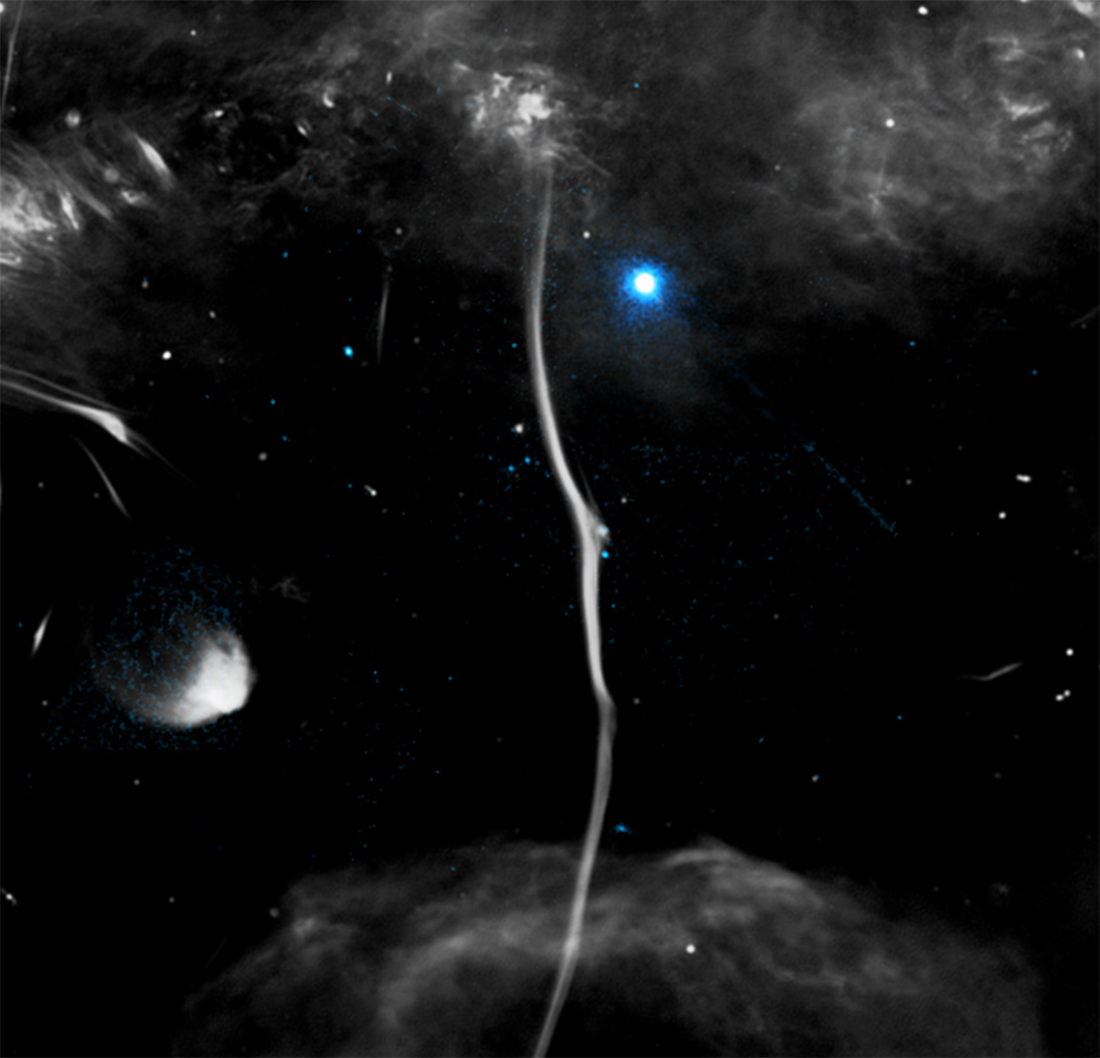The mystery of a giant “fracture” in our galaxy – the Milky Way – may have been solved after new observations from NASA’s Chandra X-ray Observatory and radio telescopes.
Looking towards the center of the Milky Way, astronomers have previously spotted giant structures that are sometimes referred to as “bones”.
“High-mass star formation in the Milky Way, a barred spiral galaxy, mainly occurs in giant molecular clouds (GMCs) or giant molecular filaments (GMFs). A special type of GMFs, which is called the ‘bone’ of the Milky Way, represents the densest structures associated with spiral arms,” a recent paper on the topic explains, adding that 20 such structures have been found in recent years.
“The bones bridge Galactic spiral arms and local star formation activities, and present some of the fundamental kinematic properties of GMCs in general. Therefore, it is of great importance to investigate how these structures form and what role they play in star formation.”
One such “bone” is known, somewhat dramatically, as the Galactic Center Snake, and it is this 230-light-years-long filament that captured the attention of authors of a new paper. In short, this particular “bone” is interesting because it is broken, appearing to be “fractured” in two places.
“The Snake is a remarkable Galactic center radio filament with a morphology characterized by two kinks along its ∼ 20 arcmin extent,” the team explains in their new paper. “The major and minor kinks are located where the filament is most distorted from a linear magnetized structure running perpendicular to the Galactic plane.”
The “Cosmic Snake” at the center of our galaxy.
Image credit: X-ray: NASA/CXC/Northwestern Univ./F. Yusef-Zadeh et al; Radio: NRF/SARAO/MeerKat; Image Processing: NASA/CXC/SAO/N. Wolk
Looking at the fractures in the cosmic snake (aka G359.13) in radio and X-ray data, the team found an X-ray and radio source right at the location of the fracture. They believe that the culprit is likely a pulsar – a highly magnetized neutron star – which slammed into the filament at a relative speed of between 1 million and 2 million miles per hour (1,600,000 and 3,200,000 kilometers an hour). The collision likely disrupted the magnetic field inside the bone, warping the radio signal, while electrons and their antimatter counterparts, positrons, being accelerated to high energies are thought to be an extra source of these signals.
“The radio luminosity and steep spectrum of the compact source are consistent with a pulsar. We also show flattening of the spectrum and enhanced synchrotron emissivity away from the position of the major kink along the Snake, which suggests injection of relativistic particles along the Snake,” the team explains. “We argue that the major kink is created by a fast-moving (∼ 500−1,000 km s−1), object punching into the Snake, distorting its magnetic structure, and producing X-ray emission. X-ray emission pinpoints an active acceleration site where the interaction is taking place. A secondary kink is argued to be induced by the impact of the high-velocity object producing the major kink.”
Further observations of the snake are necessary to see if this is the case, and also because it’s good to keep an eye on a gigantic cosmic snake stretching across the center of the galaxy, even if it is a comfortable 26,000 light-years from Earth.
New images of the Cosmic Snake can be seen on the CHANDRA X-Ray Observatory website, and a paper is published in Monthly Notices of the Royal Astronomical Society.
Source Link: Astronomers Find Odd Radio Signal Coming From Fracture In Milky Way's "Cosmic Snake"
